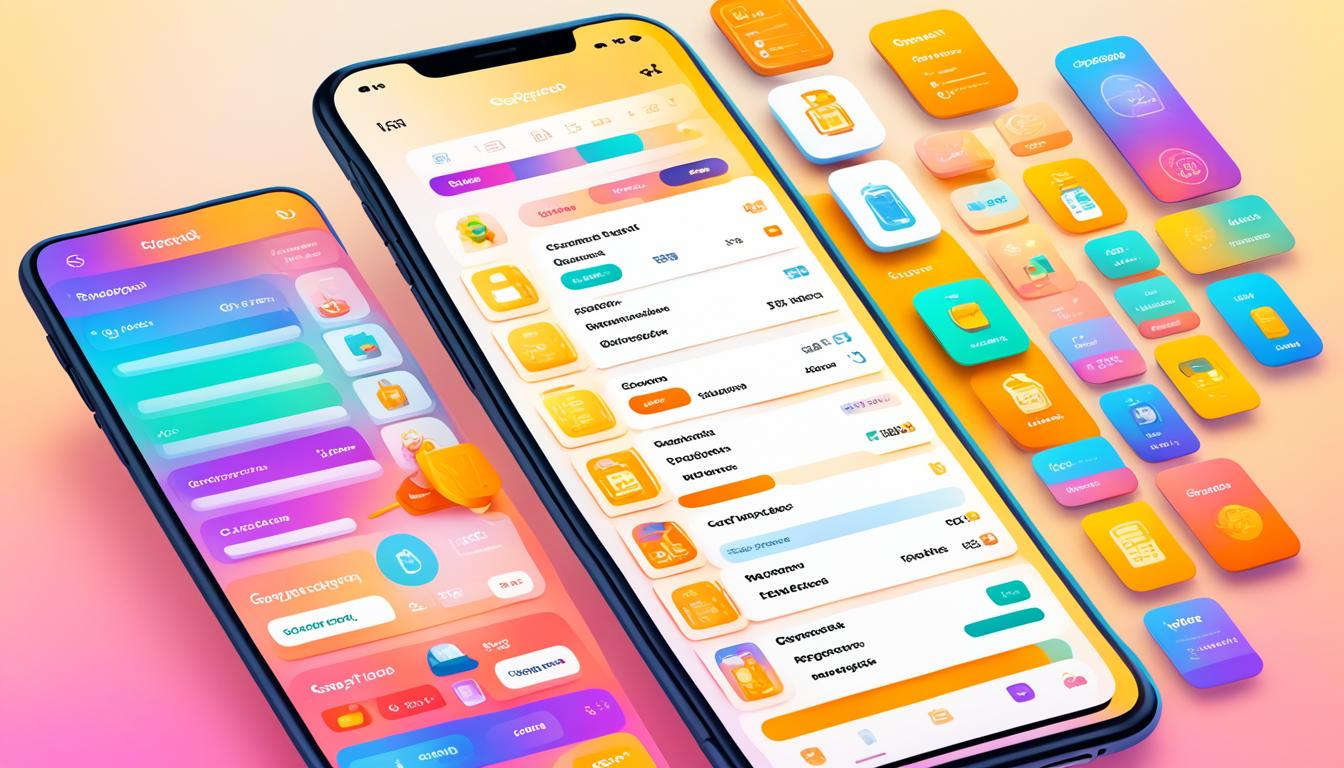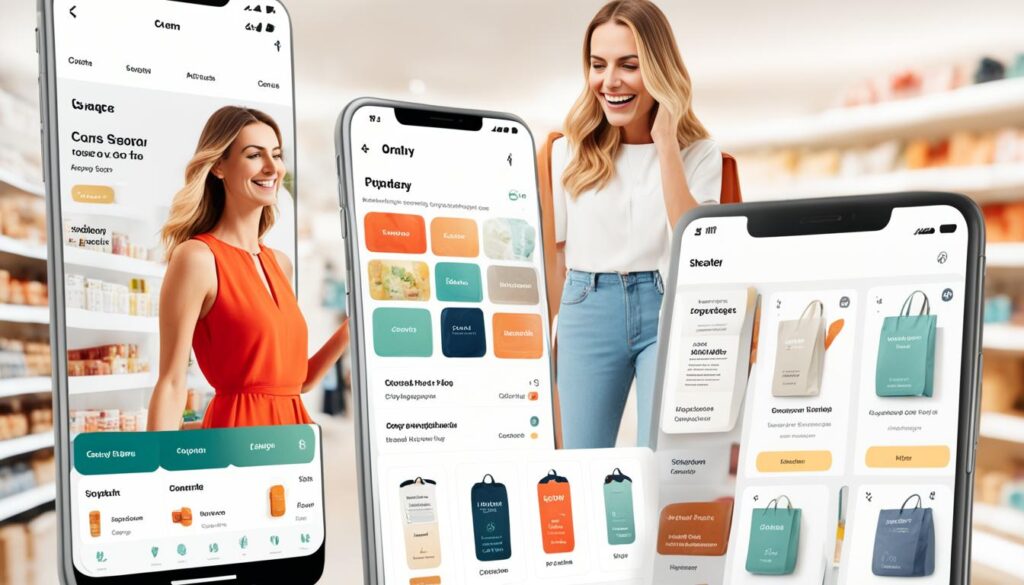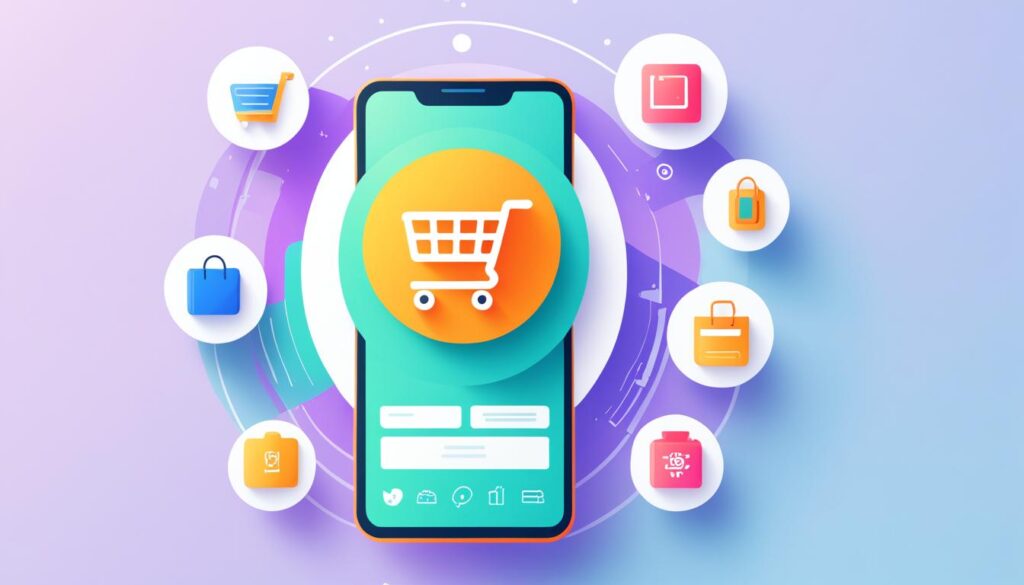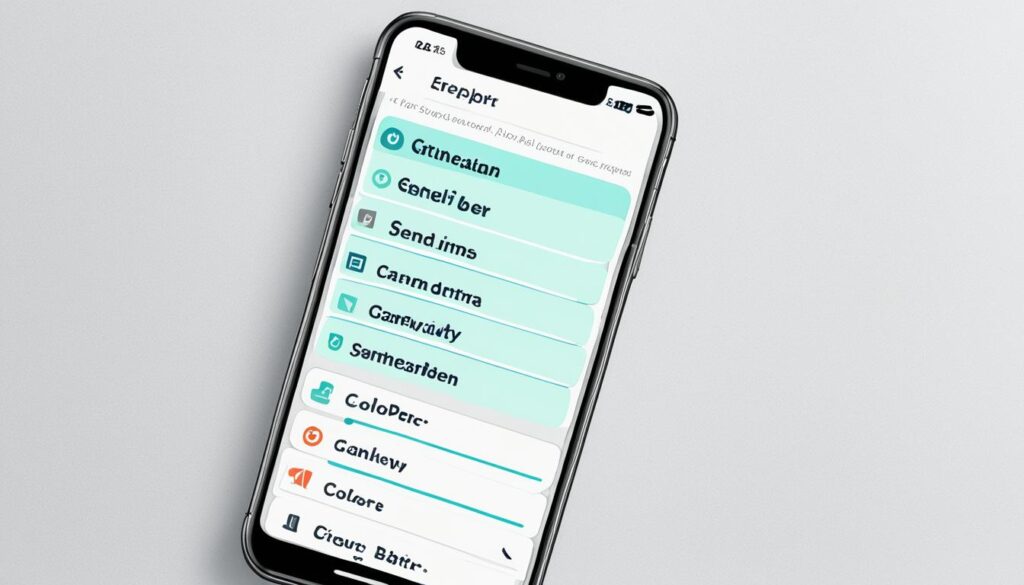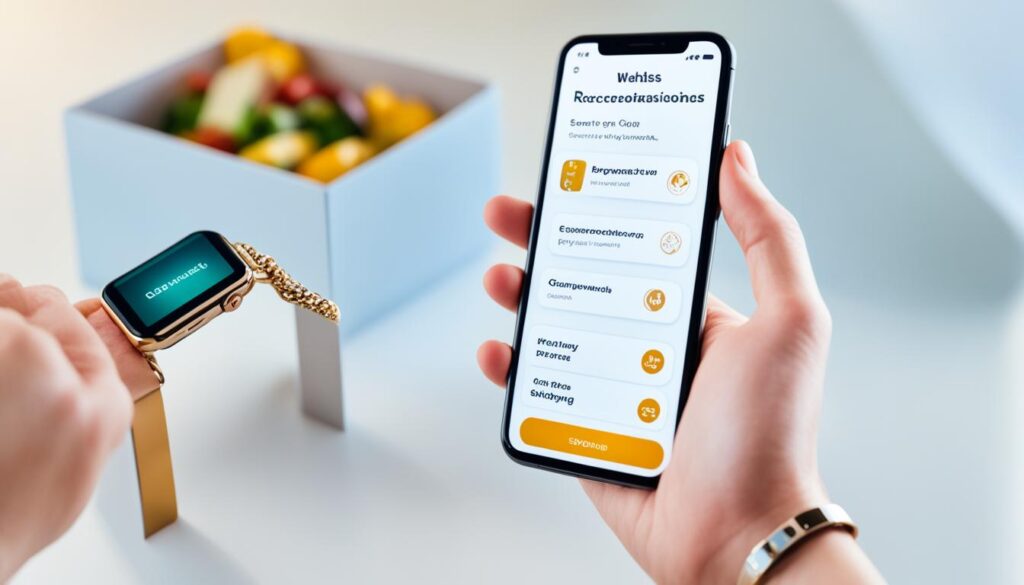In today’s fast-changing digital world, the success of online stores depends a lot on their mobile shopping experiences. Shopping apps are key, letting customers easily look, pick, and buy products from their phones. As more people shop on their phones, making apps that give a great user experience is vital to keep customers coming back.
This article will look into how to make shopping apps that meet today’s shoppers’ needs. By knowing what users want, using the right features, and making the app easy to use, businesses can make customers happier, keep them more engaged, and increase sales through their mobile apps.
Table of Contents
Key Takeaways
- Prioritize user experience to drive customer satisfaction and loyalty in the mobile commerce landscape.
- Understand consumer behavior and preferences to create personalized and engaging shopping experiences.
- Optimize app navigation and checkout processes to streamline the shopping journey.
- Leverage data-driven personalization and recommendation engines to enhance customer engagement.
- Ensure mobile-responsive design and integrate seamless social media features for a holistic shopping experience.
The Importance of User Experience in Shopping Apps
Creating a smooth and engaging user experience is key for a shopping app’s success. It’s important to know what consumers like and need. This helps make apps that shoppers love to use again and again.
Understanding User Behavior and Preferences
It’s vital to study how users act and what they prefer in shopping apps. Companies should look into how people move through their apps, what they like, and what they find hard. This helps shape the app to fit the user’s shopping style and likes.
Enhancing Convenience and Engagement
Shopping apps need to focus on making things easy and fun for users. Making it simple to look around and check out, giving personalized tips, and syncing across devices makes shopping smooth. Adding fun elements, interactive parts, and ways to share can make users stick around and feel connected to the brand.
| Key Elements for Enhanced User Experience | Benefits |
|---|---|
| Intuitive Navigation | Effortless browsing and product discovery |
| Personalized Recommendations | Increased relevance and customer satisfaction |
| Seamless Checkout Process | Reduced shopping cart abandonment |
| Engaging Features | Enhanced user loyalty and brand association |
Putting the user first helps make shopping apps that not only meet customer needs but also boost engagement and loyalty. Knowing what consumers want and making shopping easy and fun is key to a successful mobile shopping world.
“The future of retail lies in creating seamless, personalized, and engaging shopping experiences across all touchpoints. Shopping apps that prioritize user experience will be the ones that thrive in the competitive mobile landscape.”
Key Features for a Seamless Shopping Experience
Creating a great shopping app is more than just listing products. It’s about adding features that make shopping on mobile easy and fun. Features like easy navigation and personalized suggestions can make the shopping experience better. These can keep customers coming back.
Having a user-friendly app is key. It means offering real-time updates, a powerful search, and ways to save items. This makes shopping smooth and enjoyable, making users happy.
Adding secure payment options, tracking orders, and easy returns also helps. It builds trust with your app. Making checkout fast and offering many payment ways can also help keep customers from leaving their carts.
| Key Shopping App Features | Benefits |
|---|---|
| Real-time inventory updates | Ensures product availability and accurate information |
| Advanced search functionality | Helps users find products quickly and easily |
| Wishlist and shopping cart | Allows users to save and manage their desired items |
| Secure payment options | Builds trust and confidence in the app |
| Order tracking and returns | Enhances the overall shopping app experience |
By adding these shopping app features, you make your app more user-friendly. Keep improving your app based on what users say and data. This will keep customers coming back.
“Seamless shopping experiences are no longer a luxury but an expectation. Businesses that prioritize mobile app functionality and user-centric design will have a distinct advantage in the competitive e-commerce landscape.”
Intuitive Navigation and Streamlined Checkout
Having a user-friendly app is key for a great shopping experience. By optimizing the app navigation, customers can easily look through your products. This leads to more engagement and better conversion rates.
Optimizing Navigation for Easy Browsing
Make sure your app’s user interface is clean and easy to use. Use clear menu structures and labels, and make sure there’s a search function. This helps customers find what they need quickly.
Also, use user experience tips like responsive design. This makes shopping on mobile better for everyone.
Simplifying the Checkout Process
A simple checkout process helps keep customers from leaving their carts. Reduce the steps to buy by making the app easy to use. Offer guest checkout and autofill to make paying easier and safer.
“Intuitive navigation and a smooth checkout are key for a successful app. By focusing on these, businesses can make shopping better and increase sales.”
Personalization and Recommendation Engines
In today’s digital world, making shopping personal and smart is key. By using customer data, companies can offer products and content that match what customers like. This keeps customers coming back and boosts sales.
Leveraging User Data for Personalized Experiences
Personalization makes shopping smooth and fun. Businesses use customer data like what they browse and buy to give personalized product tips. This way, customers find things they’re likely to want and make choices easier, making shopping better.
With user segmentation and smart data, companies can give customers what they want. Recommendation engines use smart algorithms to pick products that fit what customers like, making them more engaged and buying more.
| Personalization Strategies | Benefits |
|---|---|
| Targeted product recommendations | Increased customer engagement and sales |
| Customized content and offers | Improved customer satisfaction and loyalty |
| Personalized user experience | Enhanced customer experience and brand loyalty |
Using personalization and recommendation engines, companies can make shopping more personal and fun. This leads to happier customers, more loyalty, and more sales.
Mobile Optimization and Responsive Design
In today’s world, mobile devices are key for shopping. It’s vital for shopping apps to work well on all devices. Mobile optimization and responsive design make sure users have a great experience, no matter their device.
For a top shopping app, developers need to keep a few things in mind:
- Fast Load Times: Making apps load quickly is key for a smooth experience. Using less data, caching, and PWA tech can make apps faster and more responsive.
- Adaptive Layout: With responsive design, the app changes to fit different screens and orientations. This makes shopping smooth on phones, tablets, and computers.
- Intuitive Navigation: Easy-to-use menus and clear layouts are crucial for a good user experience and app performance. Simplifying menus and focusing on main features makes shopping easier.
- Device Compatibility: Testing on many devices and systems is needed to make sure the app works well everywhere. This ensures the app performs well on all devices.
By following these mobile optimization and responsive design tips, developers can make shopping apps that are top-notch and engaging. These apps meet the needs of today’s mobile shoppers.
“Optimizing for mobile is no longer an option – it’s a necessity. Customers expect a seamless, responsive experience regardless of the device they use.”
Integrating Social Media and User-Generated Content
In today’s digital world, using social media and user-generated content is key for a great shopping experience. These tools help businesses connect better with customers, build trust, and use influencers to boost sales.
Leveraging Social Media for Engagement
Adding social media into shopping apps lets customers share their buys, leave reviews, and talk with the brand. This boosts customer engagement and serves as social proof. It helps others decide to buy by seeing happy customers.
- Ask customers to post their experiences on platforms like Instagram, Twitter, and Facebook.
- Add features for users to leave reviews and ratings right in the app.
- Work with influencers by teaming up with experts or creators to show off your products.
Encouraging User-Generated Content
Building a community through user-generated content is a great way to keep customers coming back. By asking users to share their own content, like photos or reviews, you make your brand seem more real and trustworthy.
- Make it easy for customers to upload and share their own content, like unboxing videos or product shots.
- Offer rewards or recognition for user-generated content to encourage more sharing.
- Show off the best user content in the app to highlight your happy customers.
By combining social media and user-generated content, businesses can use the power of social proof, influencer marketing, and community building. This makes shopping more engaging and exciting for customers.
Creating Shopping Apps for Enhanced User Experience
Making a great shopping app is more than just adding features. It’s about giving users a top-notch experience. To do this, developers need to understand what users like and what they find hard. Using a customer-centric approach and an iterative design process helps make apps that really connect with people.
The app development process should focus on making the user’s journey smooth and engaging. This means making sure the app is easy to use, from finding products to checking out. Every part of the app should be designed with the modern shopper in mind.
Adding personal touches and smart suggestions is key to a user-friendly shopping app. By using data, apps can offer products and deals that match what users like. This makes shopping more enjoyable and keeps customers coming back.
The app should work well on all devices, making sure users have a great experience everywhere. This makes the app more useful and gives it an edge in the competitive shopping app development world.
Putting the user first at every step of app development helps create apps that really shine. They become go-to choices for customers, building strong relationships over time.
“The success of a shopping app is not measured by the number of features, but by the degree of delight it brings to its users.”
Security and Trust-Building Measures
Shopping apps must keep customer data safe and private to build trust. They need strong app security to protect sensitive info. This makes users feel safe and builds trust.
Implementing Robust Security Protocols
Shopping apps should focus on data privacy. They must use strong security steps to keep customer info safe. This includes using top-notch encryption, secure payment ways, and more than one way to prove who you are.
- Use end-to-end encryption for sending and storing data
- Work with trusted third-parties for secure payments
- Ask for more than one way to prove who you are when logging in or making big purchases
- Keep an eye on and update security steps often to stay safe
Building Trust through Transparency
Shopping apps need to make users feel sure about their security and privacy. Being open and clear helps build trust. This shows the app cares about keeping user data safe and building a strong relationship with customers.
- Have clear privacy policies that explain how data is used and kept safe
- Tell users about security updates and improvements to build trust
- Have easy ways for customers to get help with security worries
- Check and make sure the app’s security measures meet industry standards often
| Security Measure | Description | Impact on Customer Confidence |
|---|---|---|
| Encryption | Secure way to send and store data | Boosts data privacy and trust in the app’s security |
| Secure Payment Processing | Uses trusted third-parties for payments | Makes users trust the app’s payment processing more |
| Multi-Factor Authentication | Adds extra steps to prove who you are | Shows the app really cares about app security and keeping users safe |
By using strong security steps and being open, shopping apps can make a safe place for users. This builds customer confidence and helps the app do well in the long run.
Analytics and Continuous Improvement
In today’s digital world, mobile shopping apps need to understand how users behave and engage. By using app analytics, stores can learn a lot about how customers use their apps. This helps in making data-driven decisions and improving things over time.
Tracking User Behavior and Engagement
Deep user behavior tracking shows where stores can improve and make things better for customers. By looking at how people use the app and what they buy, stores can make smart changes. These changes keep customers coming back and happy.
By always looking at user data, stores can make better choices. This keeps them ahead in the fast-changing world of mobile shopping.
“Leveraging data-driven insights is the key to creating shopping apps that truly resonate with customers and drive sustainable growth.”
Stores that use app analytics and always aim to get better can meet changing customer needs. This keeps their mobile shopping apps leading in innovation and making customers happy.
Emerging Trends and Future Considerations
Mobile commerce is always changing, and app developers are finding new ways to make shopping better and more engaging. Two big trends that will change shopping apps are augmented reality (AR) and voice shopping.
Augmented Reality and Virtual Try-On
Augmented reality is changing how we shop. With AR, you can try on clothes or see furniture in your home before buying them. This makes shopping more fun and helps you feel sure about your choices.
Voice-Enabled Shopping Experiences
Voice technology is making shopping easier. With voice shopping apps, you can find products, add them to your cart, and buy them all with just your voice. It’s perfect for those who want to shop without using their hands.
As developers keep exploring these trends, mobile commerce is set to get even better. Using AR and voice tech, shopping apps will offer more exciting and personal experiences. This will make shopping more engaging and shape the future of mobile shopping.
“The integration of augmented reality and voice-enabled technology in shopping apps is set to revolutionize the future of mobile commerce, creating more immersive and personalized shopping experiences for customers.”
Conclusion
This article has shown how to make shopping apps that put the user first. By knowing what customers want and using the right features, businesses can make their apps better. This leads to happier customers, more sales, and a competitive edge in mobile commerce.
Key points from this article are the need for easy navigation, quick checkout, personalized tips, and designs that work well on phones. Adding social media and user stories can make users more engaged. Also, strong security and trust can make users feel safe.
Success in shopping apps comes from giving users a smooth and fun experience. This leads to happy customers and more sales. By keeping up with new trends like augmented reality and voice shopping, businesses can keep improving and meet their customers’ needs in the fast-changing world of mobile commerce.







